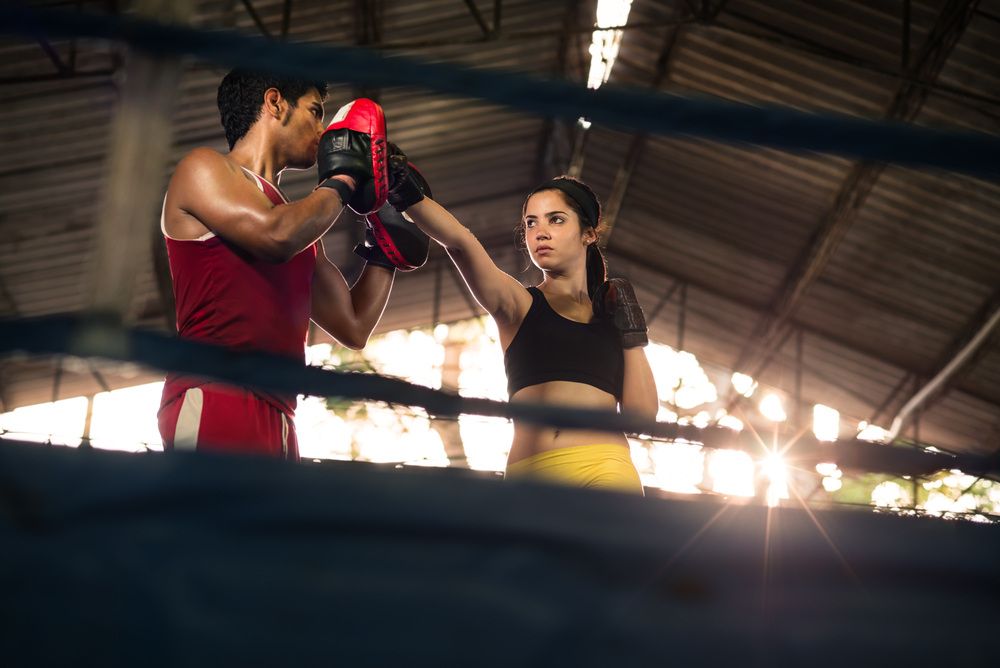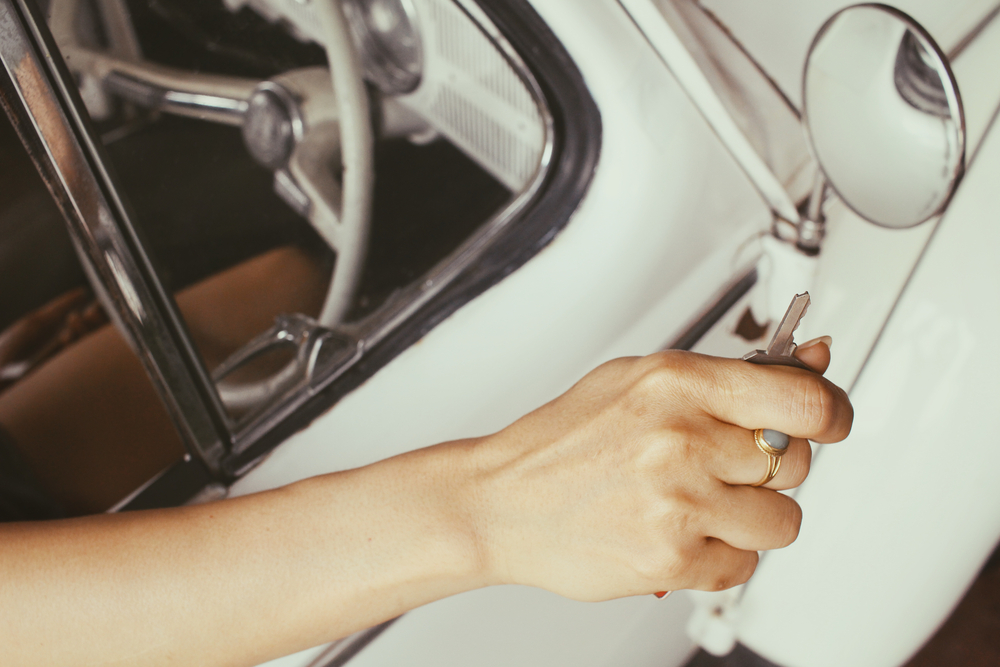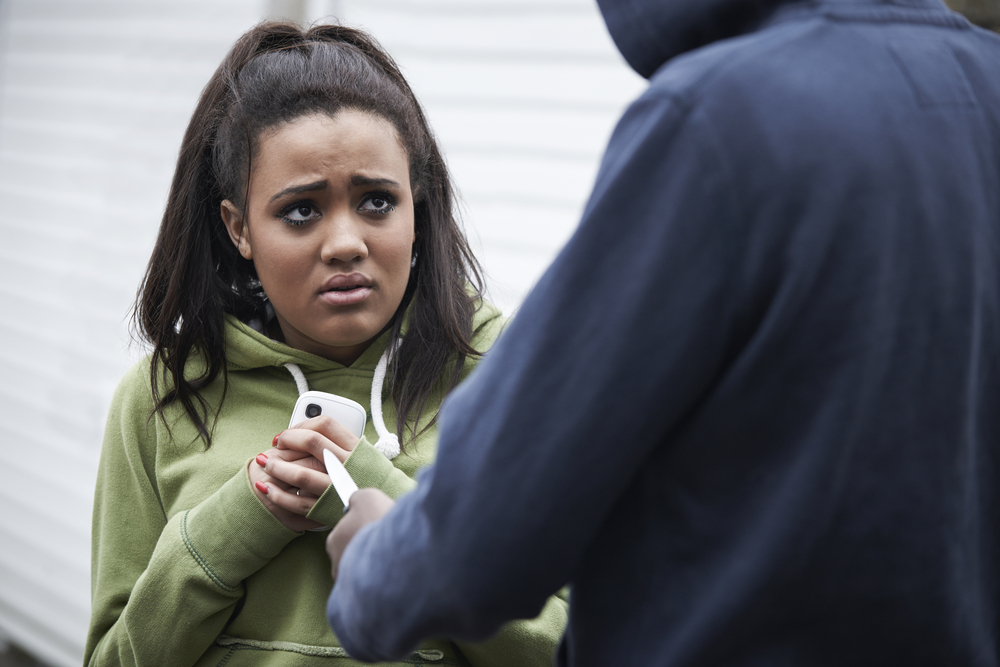Stay in the light, have your phone, walk fast, check who’s behind you... Some people naturally take these precautions to feel safer when walking alone at night. The unavoidable reality is that day-to-day activities are more dangerous for some people: women, genderqueer and non-binary individuals, people of color. I speak to the experience of being a woman, but you might find some of these tips helpful even if you identify differently.
As a woman, I was made aware of potential dangers well before I hit puberty or perceived danger in my own life. This is common. We are warned not to wear certain clothes, travel alone, and so on and so forth. Danger is out there, and until it can be stopped, we must try to protect ourselves.
In the United States, a sexual assault happens every 107 seconds. Truthfully, that scares me, not just for myself but for my mother, my family, and my friends. Because they are so frequent, assault and gender harassment will certainly affect you or the people around you at some point. I could ask every girl in the room if she has ever felt afraid walking at night; sadly, almost every single person would raise her hand. I know I would.
I created this list to help women—and everyone!—learn the new and old ways we are able to protect ourselves from harm. Following these guidelines can reduce risk, but they aren’t a guarantee for your safety. Whether or not you follow these tips, know that if you are attacked or mugged, it isn’t your fault. You are never “asking for it.”
Prepare
You’re smart. You learned the basics when you were young, and now you’d never be caught walking down a sketchy street with headphones on at 3 a.m. You’re probably not going to have too many drinks and tell everyone where you live either. But sometimes it doesn’t matter. We trust the wrong person or can’t help the situation that evolves. That doesn’t mean you are helpless. Before you face a potential danger, prepare.
- Do your research. If you’ve just moved to college, learn what’s in your area. Find the police department and the Blue Light Emergency Phones around campus. Ask fellow students which parts of town are dangerous and research the criminal activity in the neighborhood surrounding your school, home, and work.
- Take self-defense classes. Many colleges offer self-defense classes. Some might be sponsored by the school gym, but others may be considered general education, and they could even earn you credits.
Unless you’re Ronda Rousey, self-defense isn’t likely the best way to get out of a dangerous situation. Take into account, though, that the value of these classes reaches well beyond fighting back. They prepare you mentally for challenges.
Defense classes increase your self-confidence, teach you to be alert, and give you the skills to defuse a dangerous situation. These classrooms also safe places to raise questions about situations you may have, such as what to do if you or a friend has been roofied or if you’re in an physically or verbally abusive relationship.
At SUNY the College at Brockport, I enrolled in Taekwondo for a semester. I was able to practice against both male and female partners. The lessons weren’t just about how to break the grasp of a man twice my size, toss him over my shoulders, and break his nose. No. They were about empowerment. They were about feeling safe and knowing how and when to defend yourself.
My teacher intertwined the physical practice of Taekwondo with the verbal practice of diplomacy and peacekeeping. He taught violence as a last resort, only as self-defense. Using words to stop a situation before it spirals out of control can make a huge difference in an altercation. Out of everything I learned, this was the lesson I took out of the classroom and used for my protection. At a previous job of mine, a guy much larger than I was pointed a knife into my abdomen. He thought he was being funny around coworkers, but I felt threatened and backed into a corner as he advanced. I told him to stop, but he continued. I stood up tall, looked him in the eye confidently, and told him one more time. He then walked away. I knew I could disarm him, but I also knew I didn’t want a person—someone who thinks it’s funny to press a butcher knife into a girl’s stomach—to get angry. To this day, I’m thankful that my teacher taught me how to judge dangerous situations. It’s true, people are cruel, but you are more powerful than you may think.
In Your Purse
You carry your purse around with you all day, so why not have a defense mechanism in it? You could carry rocks and swing your heavy bag at potential attackers, but you might want to try some lighter options:
If you feel uncomfortable with the idea of having an obvious weapon in your bag, there’s a solution! You could consider buying a disguised weapon: Try this lipstick (pepper spray) or this comb (knife). Keep in mind that all of these weapons are probably unsuitable for air travel, and your college campus or your high school may have rules against specific weapons as well. Before you buy anything, check to see if there are any guidelines as to what you're allowed to carry on campus. There could be serious consequences if you're caught with a weapon that isn't permitted.
On Your Keychain
Place your keys in between your fingers as if they were a weapon. How do they feel? Probably a little awkward. Will this work in an attack? Possibly. You could sound your car alarm, but only if you’re near your car. Even then, will someone come rushing to your aid? It’s hard to say.
You have other options if you’re hoping to make those keys more helpful in a bad situation.
- Pepper spray: For a mere $10, hook one of these to your keychain. You can blind your attacker and make a run for it. Some states have banned pepper spray use because of how injurious it can be to both the attacker and the victim. In New York, you have a right to buy the spray, but it’s against the law to mail it to a third party. However, if it’s legal in your state, you can buy pepper spray at most superstores, including Walmart and Dick’s Sporting Goods.
- Panic alarm: If you have an alarm, it can attract attention. Your attacker may be frightened enough to flee or distracted for long enough for you to run for help. But what if you don’t have an alarm? Use the one on your car. And if you don’t have that? Use your phone. You can install a panic alarm into it by downloading an app, such as bSafe (learn more below).
- Keychains: To unsuspecting criminals, these keychains look like girly decorations. To you, they are self-defense mechanisms. Quite a few companies are creating fashion statements that also keep you safe. MUNIO is one of them (it also offers self-defense tutorials). From the website, you can also choose this cute cat keychain which turns into finger spikes in seconds. Isn’t that what every girl needs? Forget diamonds.
On Your Phone
In today’s world, with the amount of technology we use on a daily basis, there is no reason not to download a safety app. The tech world has made huge progress toward keeping its users safe. iPhones give you a built-in option to share your location. Enable this feature to let your roommates, family, and friends know where you are. Otherwise, there are plenty of free apps that could help protect you and your loved ones. I have a few favorites.
- bSafe (for iOs and Android) is there for you when no one else is available to walk home with you. This app allows members to walk each other home virtually. When you begin your trip home, open your app. It will follow your location and make an SOS button easily available. The SOS button initiates a flashing light and alarm, notifies your pre-selected guardians with your exact location, calls your primary guardian, and starts to video record what is happening. You can even count on this app to give you a fake call if you need to escape from a bad blind date.
- Circle of 6 (for iOs and Android) was created for students in the hopes that it would prevent sexual assaults. Now, it is used by people of all ages to ensure safety. Choose a circle of six people (friends or family). With the app, they can be quickly notified of your location or receive a message saying you need to talk. You can also ask them to call you and pretend they need your help immediately to get you out of a sticky situation. The resources expand far past alert buttons and fake phone calls. It can connect you to a hotline specifically for Spanish-speaking individuals, members of the LGBTIQ community, and other groups, if necessary. Members can also use this app for support. It provides plenty of information about sexual health and advice for coping with assaults and violence.
- OnCamera (for iOs and Android) will literally put you (and whomever you put in the field of view) on camera with a police officer. Your attacker’s face will be documented, and the app will begin a live video conversation with an OnCamera First Officer who has spent years as a trained police officer. These professionals are responsible for answering your call and trying to defuse the situation. They also alert local authorities of your situation and location if necessary. This is still a relatively new app, though, so it’s best to research whether or not its services are fully responsive in your area.
I wish I could foresee a future in which my family, friends, and I could walk alone at night, not fearing for our safety, but I can’t at the moment. Until then, I will rely on defense mechanisms. Thankfully, these objects, which were created to ensure our safety, are reassuring us that someone does care. Do what you need to do to feel safe. You aren’t the only one who values your safety.
-
Finding Help for Alcohol and Drug Addiction: Where to Start and When to Reach Out
-
Summer Safety Tips for Beach Bums
-
How to Spot the Signs of a Toxic Relationship
-
Drinking Myths Debunked
-
How to Prepare for a Safe Road-Trip
-
About Greek Life and Sexual Assault on College Campuses
-
The Truth about Caffeine
-
How to Recognize Cyberbullying
-
How to Stay Safe during Your New Year’s Eve Celebration
-
The Reality of Owning a Fake ID
-
The Ultimate Car Emergency Kit for Students
-
How to Respond to Cyberbullying





